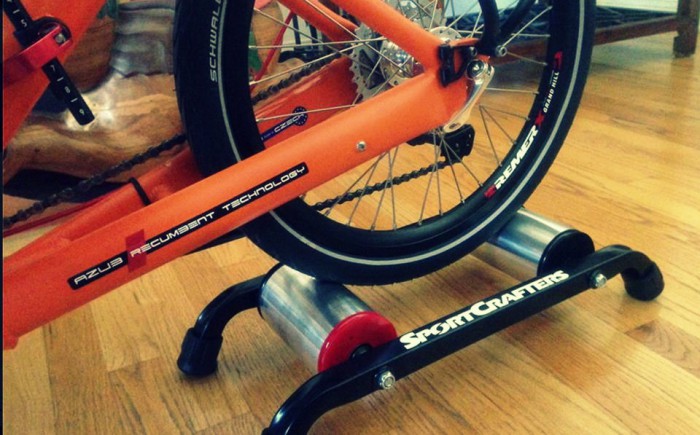
What is the difference between our trike trainer models, anyway? No worries - we'll break it down and help you choose the right trainer for your goals and equipment.
TECHNICAL: Our two trike trainer models, the Mag Trike Trainer and the OverDrive Trike Trainer (both the standard OverDrive and Double OverDrive), basically function the same way. As you increase your speed, the trainer will push back with more resistance. The difference between the two is that at higher speeds, the Overdrive model kicks back much more resistance than the Mag version. The Double OverDrive pushes back even harder for intense interval workouts. This "progressive" power curve is a better representation of what it is like to ride outside.
REAL-LIFE APPLICATION: The Mag Trike Trainer is perfect for light exercise, rehabilitation and keeping the legs spinning when the weather is bad. The OverDrive Trike Trainer allows you to spin lightly, but also has enough resistance if you want to kick it into high gear for simulated ride workouts. More accomplished athletes will appreciate the Double OverDrive for very intense interval workouts but enjoy a light recovery spin at low speeds.
EQUIPMENT: If you have a recumbent trike with 3 or 8 speeds, then the Mag or the OverDrive Trike Trainer will suit your needs. You will not have enough gearing to reach speeds that would engage the high end of the OverDrive power curve. If you have 21+ speeds and you ride more casually, the OverDrive is your best choice. If you are athletic and want a very intense workout you'll need the double OverDrive. A great benefit of either OverDrive Trike Trainers is that if you physically turn it around 180 degrees, then the type of resistance changes from OverDrive to moderate resistance.
The next consideration is the type of recumbent trike you ride. Does it have one rear wheel or two? If it has one rear wheel (aka a Tadpole Trike), then you can choose a trainer model per above, and you're all set.
If your trike has two rear wheels (aka a Delta Trike), then we need to determine if it is one-wheel drive or two-wheel drive. You can determine this by lifting each back wheel off the ground (one at a time while leaving the other on the ground), and spinning each wheel backward. Watch the pedals - if they turn when only one wheel is spun backward, then it is one-wheel drive. If the pedals turn when each wheel is spun backward, then it is two-wheel drive.
ONE-WHEEL DRIVE: You can choose a trike trainer per above, and use any standard wheel block under the other rear wheel.
TWO-WHEEL DRIVE: You need a set of trainers, like our Two-Wheel Drive Trainer Set. We have the OverDrive version listed on our website, but you can contact us for details if you think the Mag would suit your needs better.
Special Note about Brain Injuries: When using one of our trainers, your trike is not locked in place so you may experience a "rocking" motion while riding. In general, this can be reduced by focusing on a smooth pedal stroke and using clipless pedals. However, the motion may be especially bothersome for cyclists with brain injuries - in this case, we would recommend a stationary trainer like CycleOps, Kinetic, Tacx, or similar.
Special Note about Recumbents: We do not recommend using any of our products with two-wheel recumbents. Our trike trainers are only suitable for recumbent trikes.
Website by Internet Business Solutions
Add new comment